
All categories
Featured selections
Trade Assurance
Buyer Central
Help Center
Get the app
Become a supplier

(1629 products available)













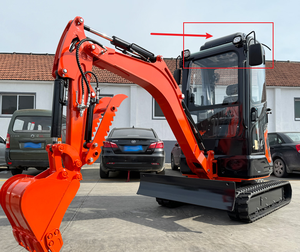
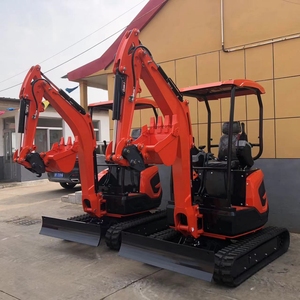
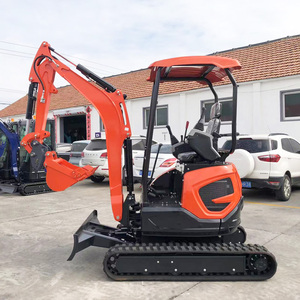
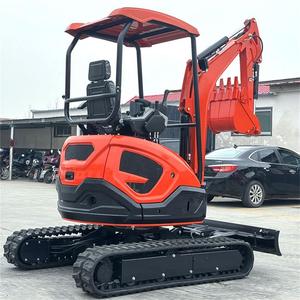
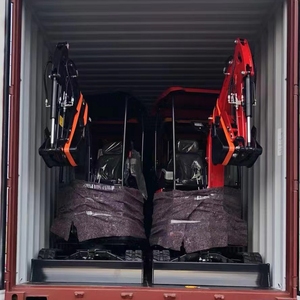
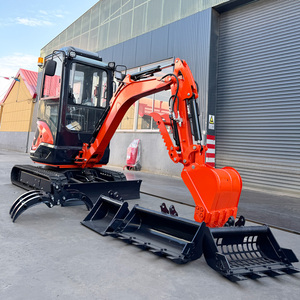


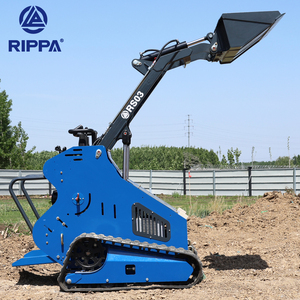












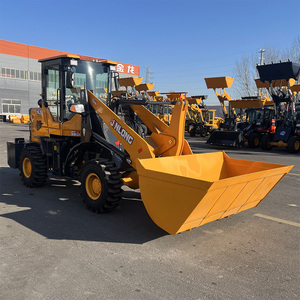


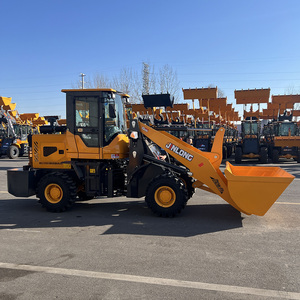

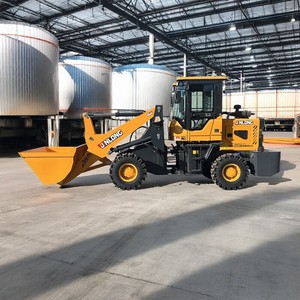
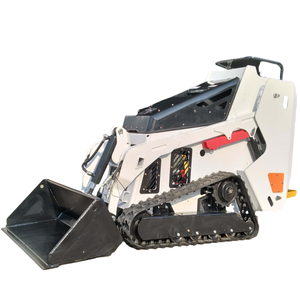











Continuous loaders also refer to 'crawler loaders.' They are a type of earth-moving machinery, often used in mining, tunneling, and construction operations. Here are some types of continuous loaders:
Bucket Wheel Loader:
A bucket wheel loader is a unique form of continuous loader equipped with a bucket wheel. The design consists of a large wheel fitted with multiple buckets. These buckets scoop up materials and discharge them onto a conveyor belt. What stands out about the bucket wheel loader is its ability to extract and transport materials simultaneously. This feature makes it well-suited for high-volume industrial operations, such as coal mining, mineral extraction, and sand dredging.
Straddle Granular Loader:
The straddle loader design is a product of post-Granular Push technology. Unlike traditional loaders that push material, the straddle loader continuously gathers materials and transports them to a designated area for processing or storage. One of the notable benefits of straddle loaders is their ability to gather granular materials from below the pile's surface. This capability reduces degradation, stratification, and segregation of materials, which can be a significant concern when handling granular fine materials. In addition, there is a significant reduction in dust emissions when using straddle loaders.
Conveyor Loader:
A conveyor loader is a type of continuous miner also known as a continuous haulage system. It gathers mined material and transports it, using a belt for continuous operation. Some conveyor loaders incorporate shuttle cars, which act as storage devices that replace the loading units. Although conveyor loaders may require more labor compared to other methods, they are more efficient.
Continuous Miner Loader:
A continuous miner loader also goes by the name of ''cutter-loader.'' It is specially designed for underground mining operations. Its primary function is to extract mineral resources, such as coal, directly from the seam. The continuous miner loader boasts a sophisticated mechanism that simultaneously cuts into the rock or soil and loads the extracted material into a transport system. This feature allows for efficient and continuous mining on a large scale.
Side Discharge Loader:
A side discharge loader is an alternative to conventional front discharge loaders. Its innovative design allows miners to operate in smaller seams and rooms. In addition, the side discharge loader creates flexibility in mine layouts and improves operational efficiency. Another advantage of a side discharge loader is that it limits the need for auxiliary hauling equipment. Miners can now enhance productivity and reduce costs by discharging materials to the side rather than having to load them again frontwards.
Continuous loaders have various specifications, and some key ones are as follows.
Incline Angle
The incline angle denotes the maximum angle to which materials can be loaded or inclined. Different incline angles have considerable impacts on loading capacities and operating efficiencies.
Length
The length of a continuous loader determines how far materials can be distributed or pushed continuously within a production line or factory space.
Speed
The speed of materials moving over a continuous loader is usually related to production efficiency. Higher speeds mean more volume, while lower speeds ensure safety and product quality.
Payload
The payload refers to the maximum weight or volume of materials that a continuous loader can handle per unit time. This is important for production planning and equipment selection.
Materials
Continuous loaders are made from different materials depending on the use and requirements. For example, rubber can provide a better grip and cushioning effect, while stainless steel is more durable and easy to clean outdoors.
Power
The power of a continuous loader is usually expressed in terms of horsepower or kilowatts. Higher power allows for handling heavier or more voluminous materials.
In order for the continuous loaders to keep functioning properly, they have to be maintained properly. Some regular maintenance tasks and tips are as follows.
Regular Cleaning
Use pressurized water to clean the surfaces of loader belts or plates as well as the inner parts of load buckets. This will not only keep them tidy but also enhance the visual quality of the products being loaded and avoid contamination transfer.
Lubrication of Bearings and Chains
Continuously lubricate the bearings and chains of belt drives by applying lubricating oil or grease to reduce friction and wear, thus prolonging their service lives.
Inspection
Check the tension and alignment of the belts regularly to ensure they are not loose or deviated. Adjust the tensions and alignment as necessary. Besides, regularly inspect the components such as chains, sprockets, and links for signs of wear, damage, or looseness. Repair or replace these parts immediately to avoid potential breakdowns.
Electrical System Maintenance
Periodically check the electrical system of continuous loaders, including controllers, sensors, and wiring, etc. Clean up the dust and debris, inspect the connections, and ensure the electrical components are working steadily and reliably.
Regular Maintenance
Regular maintenance is important for avoiding failures and ensuring stable performance. Develop a regular maintenance schedule according to the usage and manufacturer’s advice, and do necessary maintenance operations such as greasing, replacing parts, and checking parameters, etc.
Food processing industry
In the food processing industry, Continuous loaders are extensively used for bulk product loading, packing, and sorting. They efficiently feed materials like grains, vegetables, and snacks, ensuring uniformity and streamlining subsequent processing steps.
Mining and construction
A perfect example of Continuous loaders used in the mining industry is the coal continuous loader. Coal continuous loaders are well-suited for underground and surface mining operations, as well as for handling coal in power plants and cement factories. Heavy-duty continuous loaders in mining also move large volumes of materials, such as ore, coal, and gravel, from one point to another within the mining site.
Packaging and printing
In the packaging and printing industries, Continuous loaders automate the feeding of materials such as paper, plastic, and metal. They ensure precise alignment and consistent supply, improving productivity and minimizing downtime.
Textiles and manufacturing
Continuous loaders find applications in textile and manufacturing sectors by supplying materials like fabrics, wires, and cables. They support uninterrupted production lines, enhancing efficiency and reducing manual intervention.
Understanding needs
Before exploring various types of continuous loaders, people might first analyze their operational needs. Factors, such as the types of materials, supply chain configuration, and the desired handling capacity, should be taken into consideration. By understanding their specific needs, people can determine which kind of continuous loader best suits their particular use case.
Finding the suitable types
Users can refer to the classifications mentioned earlier and filter out the types of continuous loaders according to their specific scenarios. For example, in pit-loader continuous loaders are more applicable to open-pit mines, while ship-loader continuous loaders are more suitable for wharves and ports. The selection of the correct type will enhance the operational efficiency of the whole supply chain.
Matching with the conveying system
The continuous loader should be well-matched with the conveying system that follows or precedes it. Users should ensure that the continuous loader's discharge capacity and method are compatible with the type of conveyor used, be it a belt, a slide, or something else. By maintaining uniformity throughout the material handling system, users can achieve smooth operation and minimize bottlenecks.
Considering electric vs. hydraulic power
Users may select loaders powered by electricity or hydraulics according to their specific preferences and circumstances. Hydraulic-powered loaders are suitable for environments requiring explosion-proof performance, while those who prioritize energy conservation and low environmental impact may opt for electric-powered loaders.
Assessing safety and environmental performance
Another key consideration is the safety and environmental performance of the continuous loader. Safety aspects, such as overload protection, emergency stop systems, etc., should be investigated. Meanwhile, users should evaluate the environmental performance of the loaders, including dust control, noise reduction design, etc., to ensure compliance with relevant environmental standards.
Q1: What are some trends in loaders in the industry?
A1: The trend is toward larger, more automated, and environmentally friendly continuous loaders with greater capacity and efficiency.
Q2: What is the difference between a continuous loader and a shuttle loader?
A2: The difference between a continuous loader and a shuttle loader is how they operate. Shuttle loaders move materials in a "shuttle" motion, traveling back and forth between stockpiles and transportation units. Continuous loaders, on the other hand, continuously extract materials from a stockpile or mining site and load them directly onto a transport unit without pausing.
Q3: Are continuous loaders only used in mining operations?
A3: No, continuous loaders are not only used in mining operations. While they are commonly used in the mining industry for coal, iron ore, and other minerals, continuous loaders are also used in other industries. These include agriculture, bulk material handling ports and waterways Construction and infrastructure waste management facilities.
Q4: Do continuous loaders have environmental impacts?
A4: Yes, the operations of a continuous loader can have environmental impacts, such as dust pollution. However, mitigation techniques for controlling dust exist, such as water sprinklers.